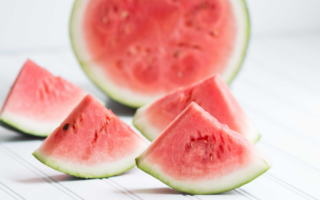Just like cheese is made from milk, tofu is made from soybeans, water, and a coagulant. Tofu is an excellent source of plant protein. It also contains nutrients like iron, magnesium, zinc, and potassium. Let us take a closer look at tofu and understand why it is a good ingredient in vegan cooking.
What is tofu and how is it made?
It is believed that tofu was first discovered by a Chinese cook who accidentally mixed fresh soymilk with nigari, a coagulant made from seaweed. Since this chance discovery 2000 years ago, tofu and its derivatives have become an integral part of Chinese cooking.
Tofu making is a simple process in which you first soak soybeans and grind them. Next, you extract the bean liquid and filter it. Finally, add calcium sulfate, which is a coagulant. This will cause the bean milk to clump together. These clumps are then wrapped in a cloth to remove the remaining water. The resulting solid is tofu.
Variations in the preparation method will yield different types of tofu. Let us look at what they are.
Soft tofu: Soft tofu has a high moisture content, is white, and has a tender texture. Soft tofu is primarily used in soup.
Firm tofu: This type of tofu is yellow and has a firm texture that pushes back when pressed. You can use it for pan-frying. It can also be crumbled.
Extra-firm tofu: This tofu has very little moisture. It is dense and can be easily cut. Extra-firm tofu must be stored in the fridge. It is used in stir-fry recipes and for baking.
Silken tofu: While other varieties of tofu come from China, silken tofu is believed to have originated in Japan. Silken tofu has a squishy texture and is silky. This type of tofu is the best choice for puddings and smoothies.
Apart from these types of tofu, you may also come across “sprouted tofu.” This type of tofu is made from sprouted soybeans. The protein content of sprouted tofu is higher than that of regular tofu.
Now that we have seen how tofu is made and explored the different varieties available, let us dive into the nutritional aspects of this super-food.
Nutritional aspects of tofu
Did you know that tofu contains all the essential amino acids that your body needs? This makes it an excellent replacement for meat and a valuable plant-based source of protein for vegans.
Apart from protein, tofu also supplies various vitamins and minerals the body requires. This includes manganese, calcium, selenium, phosphorus, copper, magnesium, zinc, iron, and manganese. Meanwhile, it has only 70 calories.
On the flip side, tofu contains anti-nutrients like trypsin inhibitors and phytates. Anti-nutrients are plant compounds that reduce the body’s ability to absorb essential nutrients. Trypsin inhibitors in tofu impact protein digestion while phytates reduce the absorption of calcium, zinc, and iron.
Fortunately, soaking beans and bean products like tofu before use can reduce the anti-nutrient content and enhance nutritional value. Sprouted tofu is nutritionally superior to regular tofu as sprouting soybeans reduces anti-nutrients while increasing the protein content.
Nevertheless, you can enjoy many health benefits when you add any type of tofu in your diet. Let us find out what they are.
Health benefits of tofu
May reduce the risk of heart disease: The isoflavones in tofu can reduce inflammation in blood vessels and improve blood flow. This lowers the risk of stroke and heart disease. Intake of soy protein may also improve the blood fat levels and lower the risk of cardiac issues.
May protect against stomach cancer and prostate cancer: Recent studies suggest that higher soy intake lowers the risk of cancers of the digestive system and prostate.
May reduce the risk of breast cancer: By influencing the blood estrogen levels, tofu possibly may reduce the risk of breast cancer in women. Regular tofu intake during childhood and adolescence offers some protection against cancer.
Some of the other health benefits of tofu are improved bone and skin health, brain functioning, and faster weight loss.
How to use tofu
You can easily find tofu in supermarkets and Asian specialty stores. It comes in different forms and you can find it refrigerated, on the shelf, dehydrated, canned or freeze-dried. Rinse it before use and store leftovers in the refrigerator for up to one week by covering with water.
When cooking tofu, remember that you should always remove the liquid to make room to soak up the seasoning. Since tofu tastes quite bland by itself, it won’t be appetizing without any flavoring. Either use a tofu press or wrap it in a kitchen towel to drain the excess liquid.
After removing the extra liquid, you can season it or marinate it with different spices and flavorings. Tofu is a versatile base that will thoroughly soak up any flavor. After seasoning or marinating it, you can cook it as you choose.
Tofu handles high heat and is suitable for pan-frying, baking, or simple stir-fries. You can also add it to smoothies, puddings, and desserts.
Wrapping up…
Tofu is a very popular vegan replacement for meat. Minimally processed, inexpensive, and easily available, this traditional Asian ingredient will help you to improve your protein intake.
Eating tofu will also may protect against various health problems. So, add tofu to your cooking through easy vegan recipes. You will be impressed by the beautiful colors, delicious texture, and variety of flavors that it brings to your meals.
Did you enjoy reading this article? Please tag me on Instagram @cookingmypoundsoff. I would LOVE to hear from you!!! Truly yours, Elena!
The content of this article should not be considered a substitute for professional medical expertise or treatment. This website is not intended to be a substitute for the advice of a physician, certified dietitian or other licensed professional. Always consult with your primary care provider before starting a new diet or introducing new foods.





